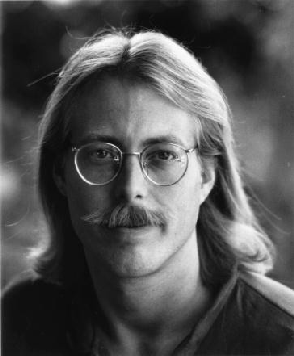

|
|
Christopher Johnson, Ph.D. |
Interactive Simulation and Visualization in Medicine: Applications to
Cardiology, Neuroscience, and Medical Imaging
In this talk I will present recent research results in computational neuroscience, imaging, and cardiology within the context of an interactive problem solving environment (BioPSE) for biomedical applications. As opposed to the typical "off-line" simulation mode - in which the scientist manually sets input parameters, computes results, visualizes the results via a separate visualization package, then starts again at the beginning - SCIRun "closes the loop" and allows interactive steering of the design, computation, and visualization phases of the simulation. I will provide examples of several driving applications of steering and interactive visualization in cardiology (defibrillation simulation and device design), neuroscience (new inverse source localization techniques and surgical planning), and imaging (new methods for interactive visualization of large-scale 3D MRI and CT volumes, and introduce new methods for diffusion tensor imaging).
Professor Johnson directs the Scientific Computing and Imaging Institute at the University of Utah where he is a Professor of Computer Science and holds faculty appointments in the Departments of Physics, and Bioengineering. His research interests are in the area of scientific computing. Particular interests include inverse and imaging problems, adaptive methods, problem solving environments, large scale computational problems in medicine, and scientific visualization. Professor Johnson was awarded a Young Investigator's (FIRST) Award from the NIH in 1992, the NSF National Young Investigator (NYI) Award in 1994, and the NSF Presidential Faculty Fellow (PFF) award from President Clinton in 1995. In 1996 he received a DOE Computational Science Award and in 1997 received the Par Excellence Award from the University of Utah Alumni Association and the Presidential Teaching Scholar Award. In 1999, Professor Johnson was Awarded the Governor's Medal for Science and Technology.

|
|
William C. Swope, PhD |
The IBM BlueGene Project: Protein Folding and Parallel Computer Design
In late 1999 IBM announced plans to begin a five year research program to develop a very large parallel computer system capable of nearly petaFLOPS (10**15 floating point operations per second) levels of performance that could be used to perform biomolecular simulations. The goal is to use this capability to study biological processes at a molecular level, and, in particular, to help improve the understanding of the phenomenon of protein folding. This ambitious project will also push the state of the art in large scale computer design and in the software tools that will be needed to fully exploit the associated hardware architecture.
The IBM BlueGene team is working with members of the computational chemistry and biology communities in academia and government to outline meaningful research programs that can make effective use of the Blue Gene resource. This talk will give a status report on some of the biological science aspects of this research program. Some early scientific results will also be presented.
Dr. Swope is a research staff member currently helping with the Blue Gene Protein Science project. He started his career in IBM at IBM Instruments, Inc., an IBM subsidiary that developed scientific instrumentation, where he worked in an advanced processor design group. He also worked for six years at the IBM Scientific Center in Palo Alto, California, where he helped IBM customers develop software for numerically intensive scientific applications. In 1992 Dr. Swope joined the IBM Research Division at Almaden, where he has been involved in software development for computational chemistry applications and in technical data management for petroleum and life sciences applications. He obtained his undergraduate degree in chemistry and physics from Harvard University and his Ph.D. degree in quantum chemistry from the University of California at Berkeley. He then performed postdoctoral research on the statistical mechanics of condensed phases in the chemistry department at Stanford University. He maintains a number of scientific relationships and collaborations with academic and commercial scientists involved in the life sciences and, in particular, drug development.